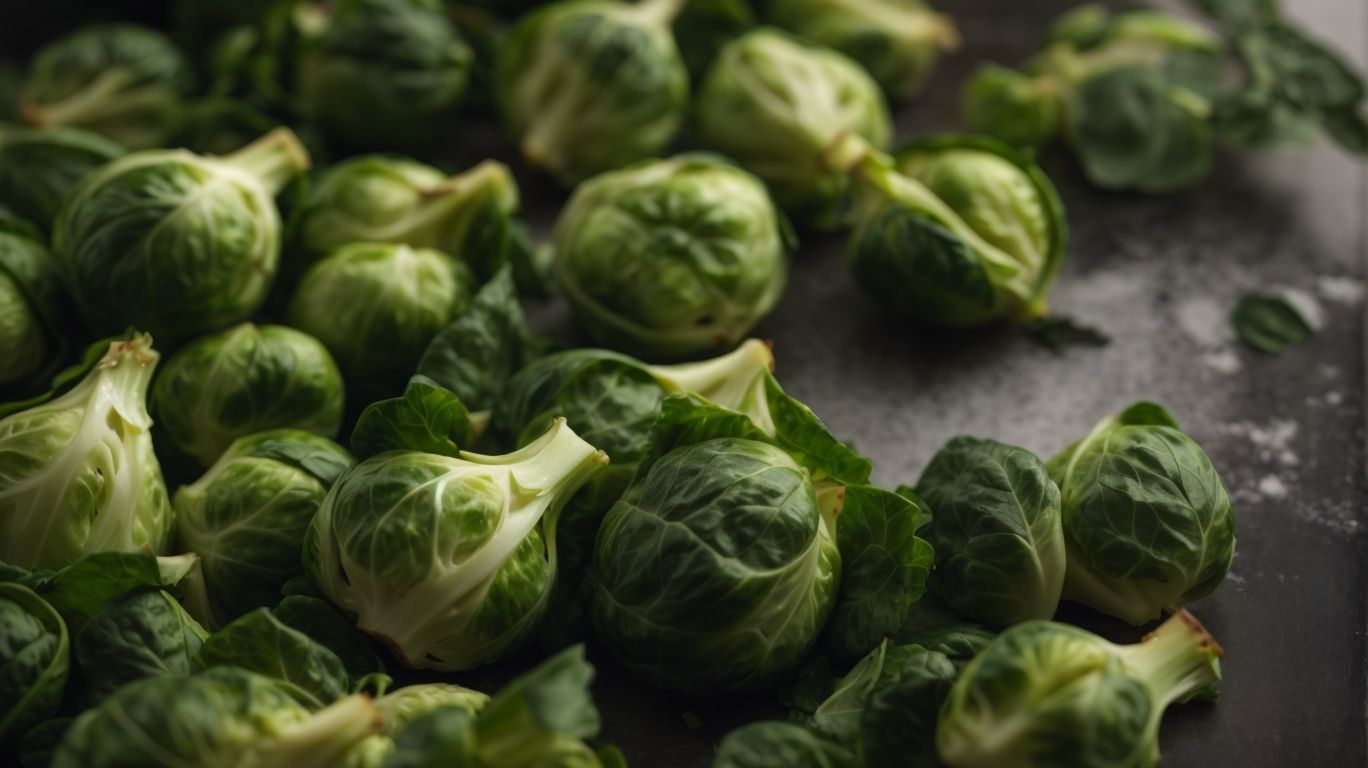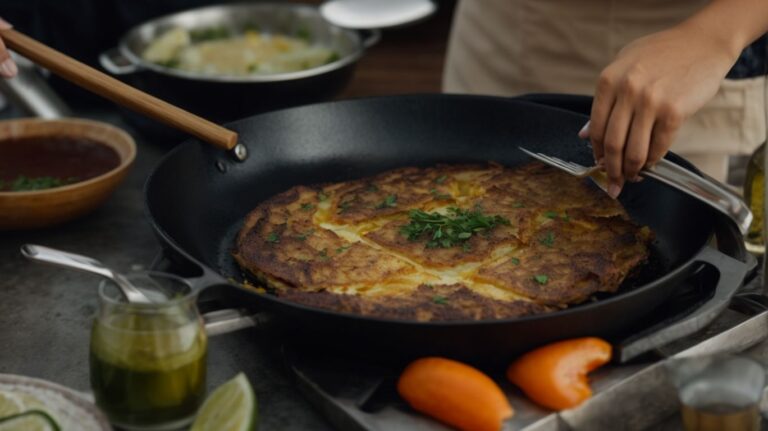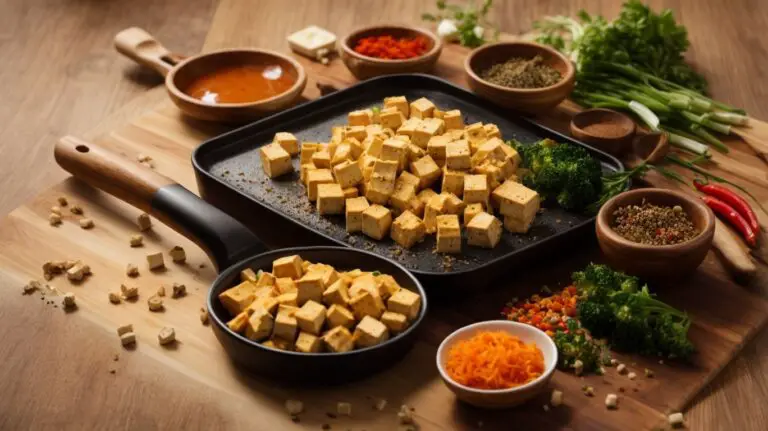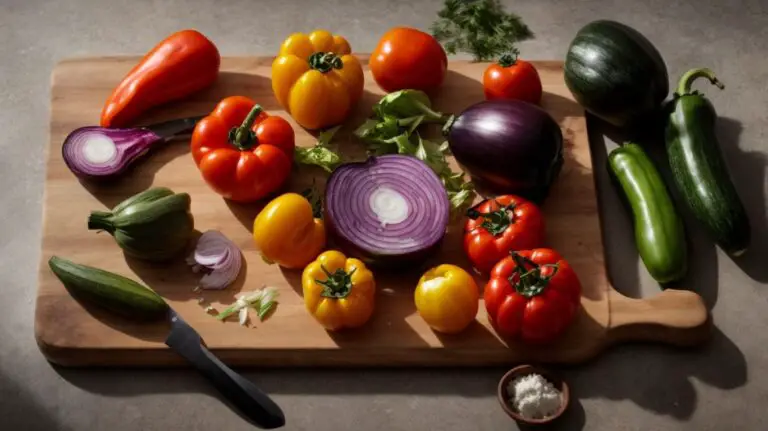How to Cook Brussel Sprouts?
Looking to add a nutritious and delicious side dish to your meals?
Consider brussel sprouts! This article covers everything you need to know about these mini cabbage-like vegetables – from how to choose and prepare them, to various cooking methods and flavoring options.
Whether you’re a seasoned cook or a novice in the kitchen, we’ve got you covered with tips and tricks to make your brussel sprouts a hit at the dinner table. Let’s get cooking!
Key Takeaways:
What Are Brussel Sprouts?
Brussel Sprouts are nutritious cruciferous vegetables that offer a multitude of health benefits and can be prepared in various cooking methods.
Known for their high levels of vitamins, minerals, and antioxidants, Brussels sprouts are a powerhouse of nutrients that support overall wellness. They are particularly rich in vitamin K, which plays a crucial role in bone health and blood clotting. In terms of cooking, these versatile veggies can be roasted, sautéed, steamed, or even enjoyed raw in salads. Their slightly nutty flavor and satisfying crunch make them a favorite ingredient in many dishes. Whether you prefer them crispy or tender, Brussels sprouts are a delicious and healthy addition to any meal.
Why Should You Cook Brussel Sprouts?
Cooking Brussels sprouts not only enhances their flavor but also helps retain their nutritional value, making them a delicious and healthy choice.
These miniature cabbages are packed with a variety of essential nutrients, including vitamins C and K, fiber, and antioxidants, which are known to boost the immune system and promote overall wellbeing. Whether you roast, sauté, steam, or even grill them, Brussels sprouts are versatile in cooking methods, allowing you to explore different flavors and textures with each preparation technique.
By properly cooking Brussels sprouts, you can soften their slightly bitter taste and achieve a delightful caramelization that enhances their natural sweetness. This cruciferous vegetable is not only delicious but also offers various health benefits, such as improved digestion, heart health, and even potential cancer-fighting properties.
Preparing Brussel Sprouts
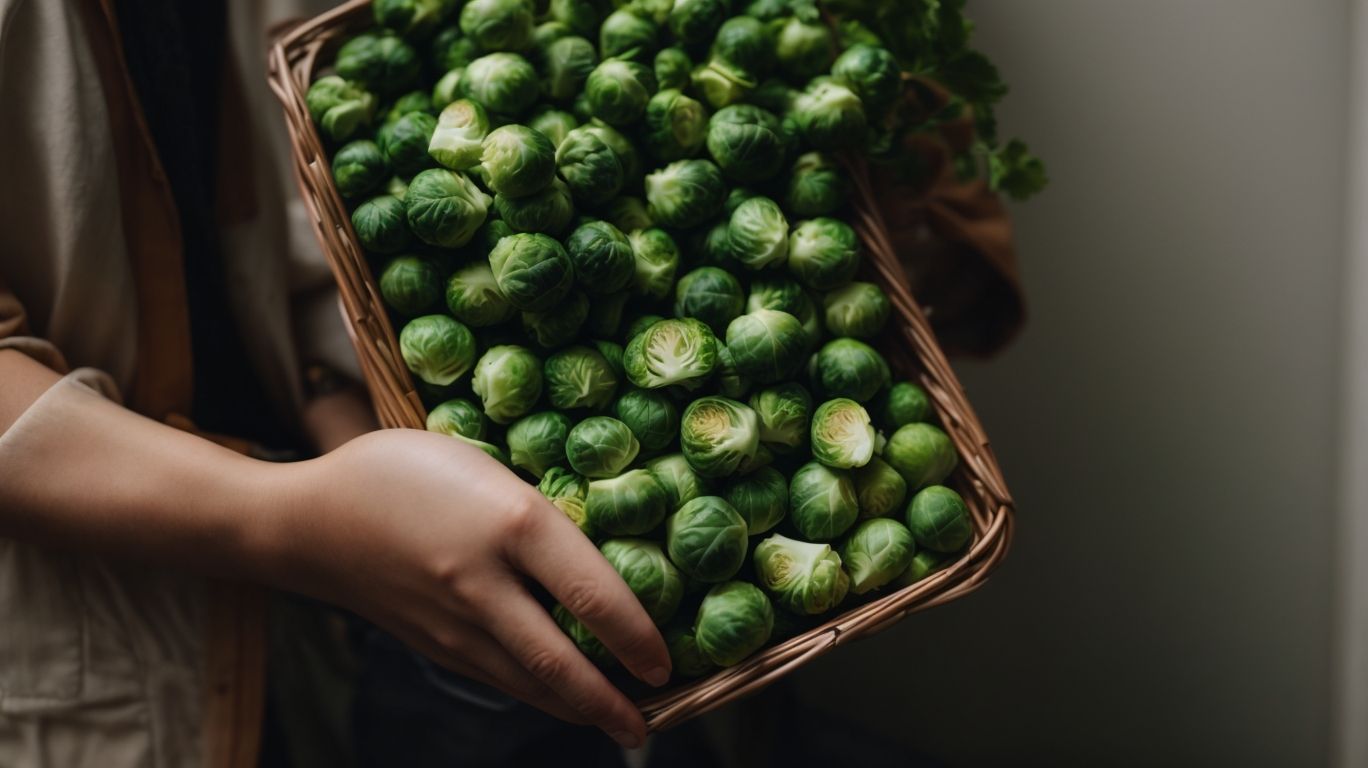
Credits: Poormet.Com – Kyle Carter
Preparing Brussels sprouts involves selecting fresh produce, cleaning and trimming them properly, and deciding whether to cut them in half for cooking.
How to Choose Fresh Brussel Sprouts?
Selecting fresh Brussels sprouts involves looking for firm, compact heads with vibrant green leaves and minimal blemishes or yellowing.
When choosing fall veggies like Brussels sprouts, pay attention to the overall firmness of the heads – they should feel dense and heavy for their size. The color of the leaves is crucial; opt for a deep, rich green hue without any discoloration or wilting. For the best quality, seek out sprouts that have a crisp texture when gently squeezed, indicating freshness. Avoid any that appear soft or shriveled, as this could be a sign of age or improper storage.
How to Clean and Trim Brussel Sprouts?
Cleaning and trimming Brussels sprouts require rinsing them under cold water, removing any damaged outer leaves, and cutting off the woody stem ends.
Once the Brussels sprouts are washed and the outer leaves are removed, the next step is to neatly trim the stem ends to ensure even cooking. Use a sharp knife to carefully slice off just a small portion of the end, exposing a fresh surface. This step not only enhances the appearance of the dish but also promotes even roasting or sautéing. After trimming, you can proceed to halve or quarter the sprouts depending on your recipe. Remember, the key is to maintain uniform sizes for consistent cooking.
Should You Cut Brussel Sprouts in Half?
Deciding whether to cut Brussels sprouts in half depends on the desired cooking method and personal preference, as halving can affect the texture and cooking time.
Cutting Brussels sprouts in half can help them cook more evenly, especially when roasting or sautéing. The cut side gets caramelized and develops a pleasant char, enhancing the overall flavor profile. On the other hand, leaving them whole allows for a more robust texture and makes for an aesthetically pleasing presentation. Consider your lemon Parmesan dressing and how it will interact with the sprouts – halved pieces may absorb flavors more readily, while whole ones offer a delightful textural contrast in each bite.
Cooking Methods for Brussel Sprouts
Brussels sprouts can be prepared using various cooking methods such as roasting, grilling, sauteing, steaming, or boiling, each imparting a unique flavor and texture to the dish.
Roasting Brussel Sprouts
Roasting Brussels sprouts in the oven creates crispy edges and enhances their natural sweetness through caramelization, making it a popular and flavorful cooking method.
Preheat the oven to 400°F (200°C) for crispy perfection. After trimming and halving the Brussels sprouts, toss them in olive oil, salt, and pepper on a baking sheet, ensuring they are spread out evenly to promote browning. The high heat of the oven will work its magic on the sprouts, transforming them into a delightful combination of tender interiors and crispy exteriors. Halfway through the cooking time, give the sprouts a gentle flip to ensure all sides get that appealing browned effect. Once they come out of the oven, the irresistible aroma of caramelized Brussels sprouts will fill your kitchen, promising a delicious treat for your taste buds.
Grilling Brussel Sprouts
Grilling Brussels sprouts infuses them with a smoky flavor and charred notes, complemented by zesty lemon and savory Parmesan, creating a delightful dish.
To achieve this delectable dish, start by slicing the Brussels sprouts in half, drizzling them with olive oil, lemon juice, and a sprinkle of Parmesan cheese. Placing them on a preheated grill, allow the sprouts to char and caramelize, enhancing their natural sweetness. The smoky aroma that fills the air adds an enticing element to the entire cooking process. Serve with a final garnish of fresh lemon zest and a generous dusting of grated Parmesan, elevating the flavors to new heights.
Sauteing Brussel Sprouts
Sauteing Brussels sprouts in a pan with olive oil or butter offers a quick and simple cooking method that preserves their natural flavors and textures.
When sauteed, Brussels sprouts develop a delightful caramelized exterior while maintaining a tender interior, creating a harmonious contrast in each bite. The process involves heating the oil, adding the sprouts, and cooking them until they are golden brown and slightly crispy on the edges. The high heat ensures that they cook rapidly, retaining their nutrients and vibrant green color. Tossed with garlic, lemon zest, or a sprinkle of parmesan cheese, these sauteed Brussels sprouts can be transformed into a versatile dish suitable for any meal.
Steaming Brussel Sprouts
Steaming Brussels sprouts is a healthy cooking method that preserves their nutrients and results in a tender-crisp texture, ideal for retaining their natural goodness.
By steaming Brussels sprouts, you achieve a cooking process that enhances the vegetable’s flavor profile without losing its essential vitamins and minerals. The steam gently envelops the sprouts, ensuring they cook evenly and develop that perfect tender-crisp consistency. This method also helps maintain the vibrant green color of the Brussels sprouts, making them visually appealing on the plate.
Plus the texture benefits, steamed Brussels sprouts are low in calories and high in fiber, making them a healthy choice for those looking to maintain a balanced diet. The gentle steam not only preserves the nutrients but also helps to bring out the natural sweetness of the sprouts, creating a delicious and nutritious side dish for any meal.
Boiling Brussel Sprouts
Boiling Brussels sprouts is a quick and straightforward method that softens the vegetables, making them suitable for various recipes and meal preparations.
When boiling Brussels sprouts, it’s important to start with a pot of generously salted water brought to a rolling boil. Add the sprouts and cook for about 5-7 minutes until they are tender but still slightly crisp. The boiling process not only softens the sprouts but also helps to mellow their slightly bitter flavor, making them more palatable for a wider range of palettes.
Flavoring Brussel Sprouts
Enhance the flavor of Brussels sprouts by adding a variety of herbs, spices, oils, and other ingredients that can elevate the taste profile of the dish.
Adding Herbs and Spices
Seasoning Brussels sprouts with herbs and spices adds depth of flavor and enhances their texture, creating a delicious and aromatic dish.
In terms of incorporating herbs and spices into your Brussels sprouts, the possibilities are endless. For a classic twist, try a combination of rosemary, thyme, and garlic to infuse earthy and robust flavors. If you prefer a zestier profile, a pinch of cayenne pepper or paprika can add a kick of heat. Experimenting with different seasonings and spice blends like curry powder or garam masala can transport your Brussels sprouts to new culinary heights.
Using Different Types of Oil
Utilize different types of oil such as olive oil or specialty dressings like balsamic vinegar or tahini sauce to coat Brussels sprouts for added richness and flavor complexity.
In terms of coating Brussels sprouts for a delectable dish, the options are varied and exciting. While olive oil adds a classic touch with its fruity notes and richness, balsamic vinegar brings a delightful tangy sweetness to the sprouts. On the other hand, the creamy and nutty tahini sauce offers a unique and indulgent flavor profile. Experimenting with different oils and dressings can elevate the taste of Brussels sprouts, making them a versatile and delicious vegetable side dish.
Incorporating Other Ingredients
Incorporate ingredients like feta cheese, quinoa, farro, or pasta into Brussels sprouts dishes to create flavorful salads, grain bowls, or hearty pasta recipes.
These versatile ingredients can transform a simple Brussels sprouts dish into a culinary masterpiece, offering a variety of textures and flavors that complement the natural nuttiness of the vegetables.
Whether crumbled over a bed of roasted Brussels sprouts to add a creamy tanginess or mixed with quinoa for a protein-packed grain bowl, feta cheese elevates the dish with its rich taste.
Similarly, the nutty aroma of farro pairs beautifully with the earthy Brussels sprouts, offering a chewy texture that enhances the overall dish.
When combined with pasta, these ingredients create a comforting and satisfying meal that celebrates the fusion of flavors.
Serving and Pairing Brussel Sprouts

Credits: Poormet.Com – Albert Garcia
Serve Brussels sprouts as standalone dishes or pair them with complementary foods to create delicious meal combinations that cater to different tastes and preferences.
How to Serve Brussel Sprouts?
Serve Brussels sprouts as a side dish, salad, or main course, utilizing meal prep techniques and creatively incorporating leftovers into new recipes for added flavor.
Brussels sprouts are a versatile vegetable that can be roasted, sautéed, steamed, or even grilled to bring out their natural nutty flavor. For a simple side dish, try roasting Brussels sprouts with olive oil, garlic, and a sprinkle of parmesan cheese. If opting for a salad, consider shaving raw Brussels sprouts thinly and combining them with apples, nuts, and a tangy vinaigrette. As a main course, Brussels sprouts can be the star ingredient in a hearty stir-fry or a creamy pasta dish.
What Foods Pair Well with Brussel Sprouts?
Pair Brussels sprouts with proteins like pork, chicken, or salmon, or incorporate them into pasta dishes for versatile meal combinations that cater to various tastes.
In terms of pairing Brussels sprouts with proteins, pork is a classic choice that brings a savory and rich flavor to the dish. The slight sweetness of pork complements the earthy notes of the sprouts perfectly. Chicken, on the other hand, offers a more neutral base, allowing the Brussels sprouts to shine with their unique taste. Meanwhile, salmon adds a luxurious touch with its buttery texture, elevating the overall dining experience.
For pasta lovers, mixing Brussels sprouts into dishes like creamy carbonara or garlicky aglio e olio can create a delightful fusion of flavors. The slightly bitter taste of the sprouts adds depth to the pasta, balancing out the richness of the sauce.
Troubleshooting Common Mistakes
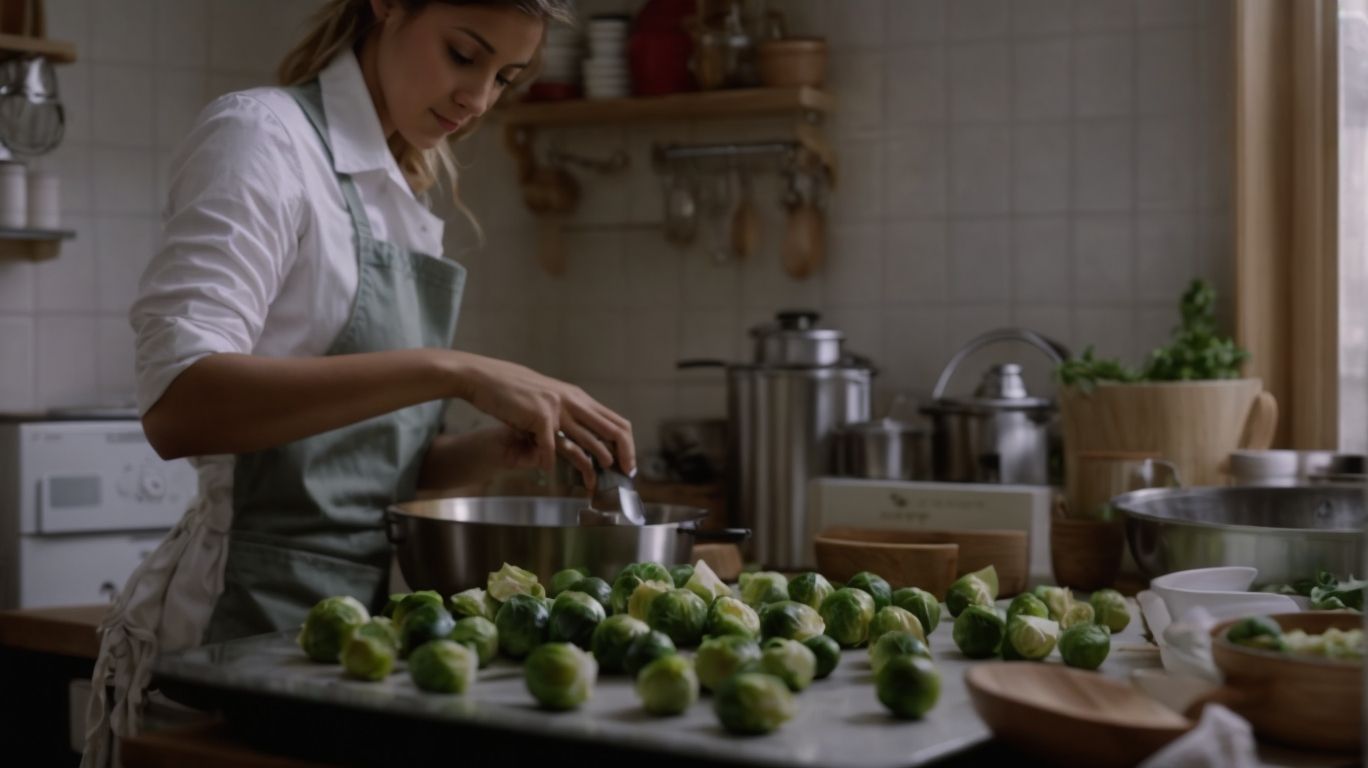
Credits: Poormet.Com – Eric Thompson
Avoid common mistakes when cooking Brussels sprouts such as overcooking, bitterness, or unpleasant odor by following simple tips and techniques for a delightful dining experience.
How to Avoid Overcooking Brussel Sprouts?
Maintain the ideal texture of Brussels sprouts by avoiding overcooking, whether sauteed, roasted, or using pre-packaged frozen varieties for convenient meal preparation.
For sauteed Brussels sprouts, ensure the pan is adequately heated before adding these vibrant green veggies, which helps in quick cooking while retaining their crunch.
When roasting Brussels sprouts, spread them out evenly on a baking sheet to prevent overcrowding, allowing for proper caramelization and a tender yet slightly crispy bite.
For frozen Brussels sprouts, opt for quick steaming or stir-frying methods to prevent them from becoming mushy, preserving their natural firmness.
Texture is key in all these methods; balance the cooking time to achieve that perfect tender-crisp consistency.
What to Do if Brussel Sprouts are Bitter?
Counteract bitterness in Brussels sprouts by pairing them with sweet ingredients like sweet potatoes, balancing flavors with acidic elements such as lemon juice or vinegar for a harmonious taste.
One effective way to diminish the bitterness in Brussels sprouts is to roast them with honey-glazed sweet potatoes. The natural sweetness of the potatoes not only complements the sprouts but also helps to mellow out any harsh flavors. Consider adding a splash of freshly squeezed lemon juice during cooking to provide a bright and tangy contrast.
Incorporating a balsamic vinegar reduction as a finishing touch can further enhance the overall depth of flavors, creating a well-rounded dish. It’s crucial to strike the right balance between sweet and acidic components to ensure a delightful culinary experience. Remember that experimentation with different combinations of sweet and acidic ingredients can lead to exciting new flavor profiles for your Brussels sprouts.
How to Make Brussel Sprouts Less Smelly?
Minimize the strong smell of Brussels sprouts during cooking by opting for caramelization techniques that enhance their flavor profile and reduce the pungent aroma, creating a more pleasant dining experience.
-
One effective way to achieve this is by sautéing Brussels sprouts in a hot pan with a touch of olive oil until they develop a golden-brown, crispy exterior, which not only intensifies their sweetness but also helps in mellowing down the overpowering smell.
-
Another method is roasting the Brussels sprouts in the oven. Tossing them with balsamic vinegar and a sprinkle of garlic powder before roasting can elevate their taste while preventing the strong odor from permeating the kitchen.
Frequently Asked Questions
1. How to Cook Brussel Sprouts?
Cooking brussel sprouts is simple and easy! Start by trimming off the ends and cutting them in half. Then, toss them in a pan with olive oil, salt, and pepper. Roast them in the oven at 400 degrees Fahrenheit for 20-25 minutes until they are crispy and tender.
2. What are some creative ways to cook brussel sprouts?
Brussel sprouts are versatile and can be cooked in various ways. You can try roasting them with balsamic glaze or honey mustard sauce for a sweet and tangy flavor. You can also sauté them with bacon and garlic for a savory dish. Be creative and experiment with different flavors!
3. How long does it take to cook brussel sprouts?
The cooking time for brussel sprouts depends on the method you use. Roasting or sautéing them typically takes 20-25 minutes, while steaming them takes about 10-15 minutes. The key is to cook them until they are tender and slightly crispy.
4. Can I cook brussel sprouts in the microwave?
While it is possible to cook brussel sprouts in the microwave, it is not recommended. Microwaving them can make them mushy and less flavorful. It’s best to stick to cooking them in the oven, stovetop, or steamer for the best results.
5. How do I know when brussel sprouts are done cooking?
The best way to know if brussel sprouts are done cooking is by testing their tenderness with a fork. If the fork easily pierces through the sprout, they are ready to eat. You can also taste a piece to check for your desired level of tenderness.
6. Are there any safety precautions to keep in mind when cooking brussel sprouts?
When handling brussel sprouts, be sure to wash them thoroughly and trim off any discolored or tough outer leaves. Also, be careful when cutting them as the knife can slip on their round shape. And always remember to use oven mitts or potholders when handling hot pans or dishes.

